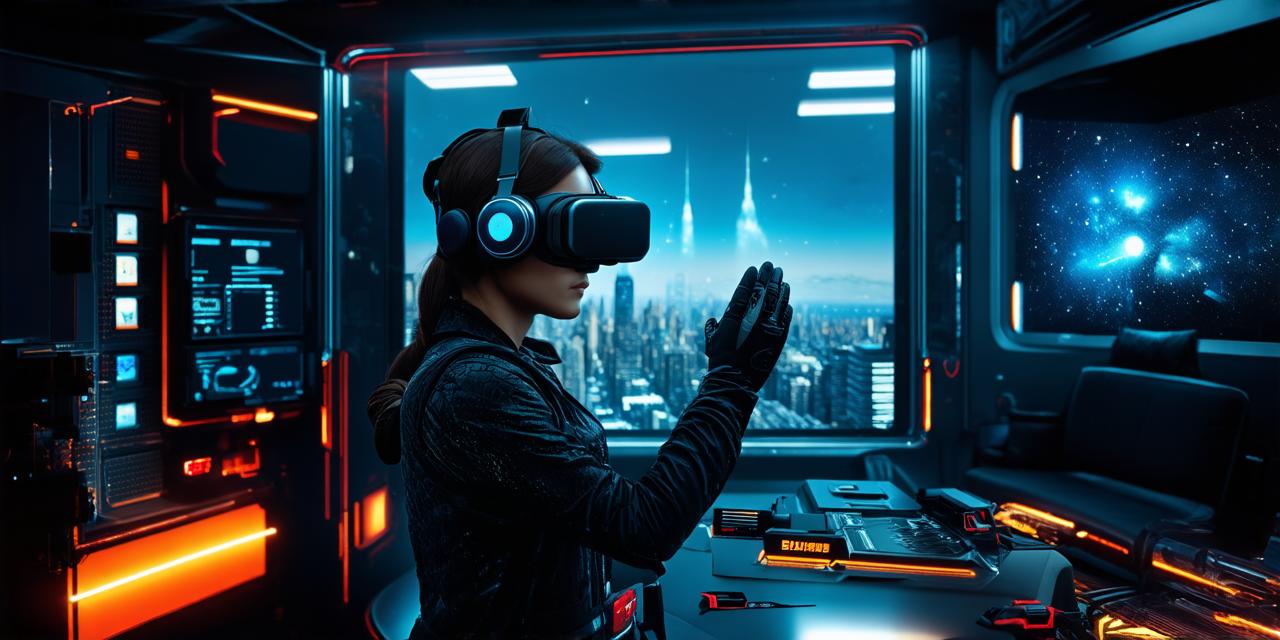Virtual Reality (VR) Technology
Virtual reality (VR) technology has the potential to revolutionize healthcare and education by providing immersive and engaging learning experiences that can improve outcomes and enhance the overall learning process. However, there are also several challenges associated with integrating VR into these fields, including accessibility concerns, high costs, and a lack of standardization.
Opportunities in Healthcare:
-
Medical training: VR technology can provide medical students and professionals with hands-on training in a safe and controlled environment. This allows them to practice surgical procedures and other medical scenarios without risking patient safety or causing harm.
-
Patient education: VR technology can be used to provide patients with immersive and engaging learning experiences that can improve their overall well-being. For example, VR can be used to simulate medical procedures or physical therapy sessions, allowing patients to practice and improve their skills in a safe and controlled environment.
-
Pain management: VR technology has been shown to be effective in managing pain for patients with chronic conditions. By providing immersive and engaging experiences that distract from pain, VR can help reduce the need for medication and improve overall patient outcomes.
Opportunities in Education:
-
Immersive learning environments: VR technology can provide students with immersive and engaging learning environments that allow them to explore complex concepts and ideas in a fun and interactive way. By providing realistic simulations of real-world scenarios, VR can help students develop a deeper understanding of complex concepts and improve their overall learning outcomes.
-
Language learning: VR technology has been used to create immersive language learning experiences that allow students to practice speaking and listening skills in a safe and controlled environment. By providing realistic simulations of real-world conversations, VR can help students develop the language skills they need to communicate effectively with others.
-
History and social studies: VR technology can be used to create immersive historical and social studies experiences that allow students to explore different cultures, time periods, and historical events in a fun and engaging way. By providing realistic simulations of historical settings, VR can help students develop a deeper understanding of the world around them.
Challenges:
-
Accessibility concerns: One of the biggest challenges associated with integrating VR technology into healthcare and education is ensuring that it’s accessible to all users, regardless of their physical abilities or disabilities. This requires designing VR experiences that are intuitive and easy to use, as well as providing support for assistive technologies such as screen readers and closed captioning.
-
High costs: Another challenge associated with integrating VR technology into healthcare and education is the high cost of hardware and software. While VR technology has become more affordable in recent years, it still requires significant investment to develop and maintain VR experiences.
-
Lack of standardization: There is currently no widely accepted standard for VR development and optimization, which can make it difficult to create interoperable experiences that work across different platforms and devices. This lack of standardization can also make it difficult to measure the effectiveness of VR experiences and evaluate their impact on outcomes.
Case Studies: Virtual Reality in Healthcare and Education
Osso VR’s “Medical Realities”
Osso VR’s “Medical Realities” is a virtual reality platform that allows medical students and professionals to simulate surgical procedures and other medical scenarios in a safe and controlled environment. By providing hands-on training in a virtual setting, “Medical Realities” offers a unique and effective way to teach medical skills and improve patient outcomes.
Discovery Education’s “Alchemy VR”
Discovery Education’s “Alchemy VR” is a virtual reality platform that allows students to explore the natural world in an immersive and interactive way. By taking virtual field trips to locations around the world, students can learn about geology, biology, and other scientific disciplines in a fun and engaging way.
Google’s “Expeditions”
Google’s “Expeditions” is a virtual reality platform that allows students to take virtual field trips to museums, historical sites, and other locations around the world. By providing immersive and interactive learning experiences, “Expeditions” can help students develop a deeper understanding of complex concepts and improve their overall learning outcomes.
Summary: Virtual Reality in Healthcare and Education
Virtual reality technology has the potential to transform healthcare and education by providing immersive and engaging learning experiences that can improve outcomes and enhance the overall learning process. However, there are also several challenges associated with integrating VR into these fields, including accessibility concerns, high costs, and a lack of standardization. By overcoming these challenges, VR technology can help healthcare and education professionals create more effective and efficient learning experiences that can benefit students and patients alike.
